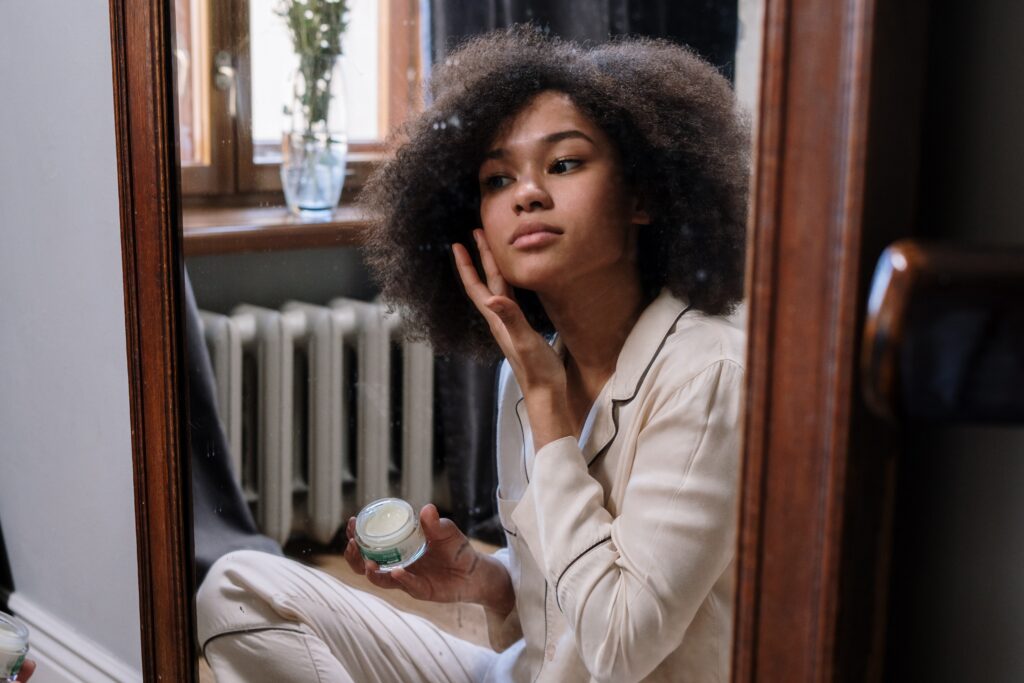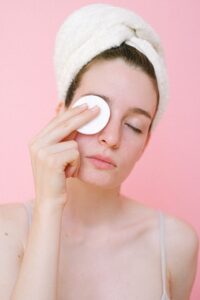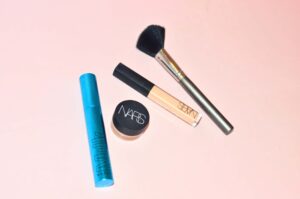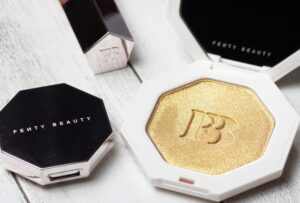A great step to an airbrushed makeup look is a good skincare routine, so whenever you feel like grabbing your makeup brushes and getting glammed, don’t forget to nourish the skin first. And a makeup primer is the best approach to that.


What is makeup primer?
A makeup primer’s motive is to really prepare the skin before any dot of foundation, concealer, bronzer, or whatever makeup product you use meets the surface of the skin.
A prominent pore and fine line minimizer, makeup primer does wonders in acting as a filter-like hybrid between makeup and skincare because there are great face makeup primers that to some extent provide great coverage too.
It also helps makeup last longer, so whenever that summer breeze gives you that extra pressure on locking your makeup in place for hours, makeup primers do have you covered, while preventing the pores from appearing too shimmery.
Makeup primer types
Hydrating Primer
Everyone would want to choose a primer based on their personal skin preferences. Luckily, there’s a primer formula for every skin type.
Those with dry skin would ideally choose a hydrating primer, which is oil-based and plays a huge role in the skin’s health. Minimizing the look of pores and fine lines, and also being significant at moisturizing and refreshing skin, a hydrating primer is a skincare-makeup staple.
Color-Correcting Primer
Close to color-correcting concealer, color-correcting face primers cover the blemishes, obscuring skin imperfections and acting as a natural-appearance-achieving product. Lightweight and redness-reducing, the color-correcting primers are the ultimate choice for a spotless canvas.
Mattifying primer
Filling in enlarged pores, evening out the skin, and providing foundation longevity – a mattifying primer would be the best buddy for everyone with oily skin. A mattifying primer that’s silicone-based would also deliver a seamless finish, keeping the foundation, concealer, and all your makeup products in place.
Illuminating Primer
There truly is a primer for everything. The illuminating primer gives a dewy, glowing finish while also having the nurturing properties the classic face primer does. Creating a faultless base for the foundation, similar to a silicone-based primer, the illuminating face primer will help you achieve the glazed donut skin look.
A face primer is a necessity. However, there are specific primers that target specific areas of your face which can help as a healthy barrier between skin and makeup. (Although you can use your general face primer on all of your face features).
Eyeshadow primer
Eyeshadow primer is a stroke of luck for those with oily lids struggling to make eyeshadow last longer or eyeliner look non-smudgy. Coming in a liquid or cream-based formula, eyeshadow primer prevents that budged eye makeup look.
Lip Primer
A makeup look is top-tier when you’re serving a good lip makeup. Bold, glossy, or barely there.
A lip primer would create a smooth exterior for your lip product to be applied. Lip primers are also good for helping the hue of the lip product last longer, and if you’re going for an effortless lip, applying only primer would do you just right.
Lash Primer
A pair of hydrated and long lashes never fails to deliver a gorgeous look. A lash primer coats your lashes because of the white fibers it contains, removing the makeup residue and the excessive natural oils on your lashes. Your mascara application and a lash primer would be the perfect fit for separated, fluffy eyelashes.
How to apply makeup primer?
If moisturizer is applied before primer, it is advised that you let it absorb before you put on primer.
Makeup or face primer should be applied on all areas you plan on putting makeup on. Not any skin part must miss out on the primer. Because makeup primer creates an even skin texture, it assures that your foundation will stay put together, while also strengthening your skin barrier.
A great makeup primer applicator can be a beauty sponge, which would really let the product be soaked by the skin and sit well.
You can also use your fingertips, but if you have oily skin, you may want to choose a good quality makeup brush (preferably a smooth-bristled foundation brush) instead, since fingertips contain some natural oils.
Whichever way you choose, make sure you apply your makeup primer in a tapping motion or gently rub it in.
What takes a makeup primer to do you justice, is that one, or few minutes during which you let the product sit into the skin and do its job. After letting it get into the skin, you can then start and apply your makeup.
How to choose a good face makeup primer?
A good makeup primer contains all the skin-thriving properties. A good face primer would be very hydrating, and rich in glycerin and niacinamide, which provide good moisture and avoid skin redness.
A copper primer finish would be a perfect choice if you want to go for a no-makeup makeup look since it would give off a good amount of coverage and a good amount of brightness to the face.
On the contrary, a translucent primer can also make a convenient makeup-prepping product, as it blends into the skin. When reaching out for any translucent primer, look for a cast-free formula.
What would also be considered a great suggestion when speaking of primers, is the SPF some makeup primers have as an ingredient, which would help you be protected from the UV sun rays while also blurring the pores and delivering a flawless base.
Along with all the benefits and nurturing ingredients some primers come with, there are specific primers that contain fragrance, so if your skin is easily irritated by such components, you would want to avoid such products and pick a fragrance-free formula instead.
Matching Your Primer with Your Foundation
If you’re reading this, you’ve now understood the fundamentals of primer and how it helps foundation, blush, contour, bronzer, or concealer last longer and appear flawless. This is one scenario.
The other one is the product mismatch. There may be times your foundation and makeup will end up looking flaky and patchy even with primer on. That’s because the primer is not compatible with the foundation you use.
When you choose your primer, the most important thing you should look out for is the formula you’re picking. A silicone or oil-based primer wouldn’t work well with a water-based foundation and vice versa. People with dry, sensitive skin always tend to pick water-based formula makeup, since it’s known for its lightweight and hydrating nature, whereas silicone-based primers which protect the skin and deliver a matte finish, would be the front-runner for those with oily skin
Checking the ingredients will always play out to an endured makeup look.
Like most makeup and skincare products, makeup primers are also multifunctional, giving the skin barrier a ray of sunshine, moisture, protection, and hydration all at once. Incorporating a primer into the routine is nothing but a good move.



